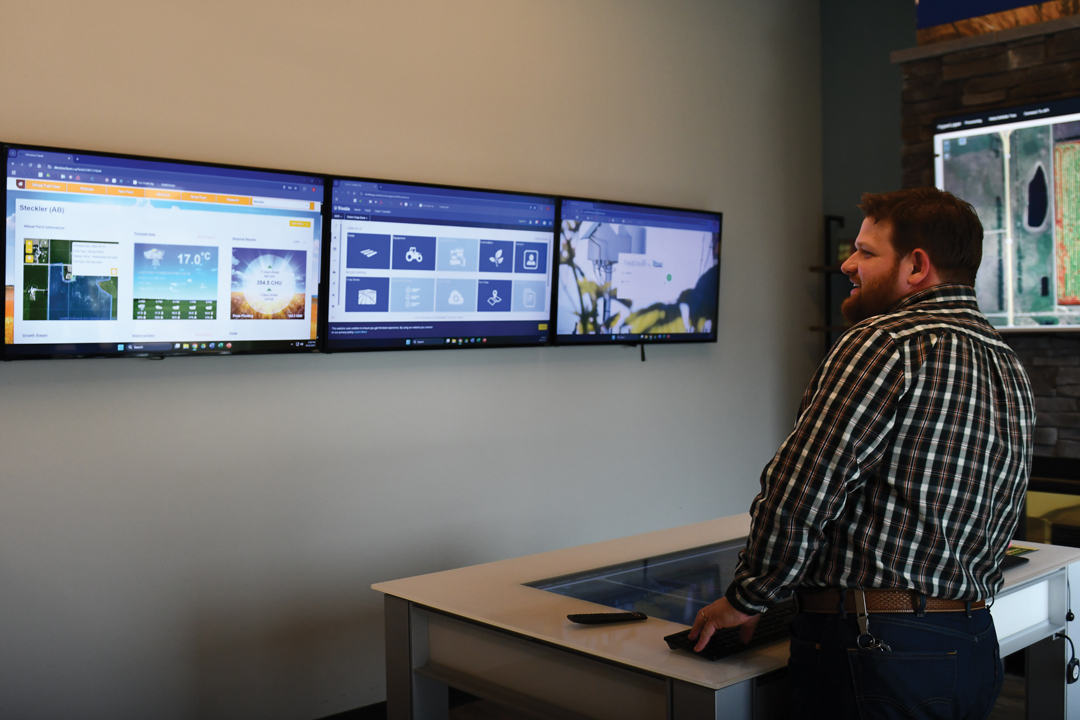THE MAKING OF A DIGITAL FARMHAND
BY DOUG FERGUSON • PHOTO COURTESY OF OLDS COLLEGE
Farmers may soon be able to chat with an AI assistant for agriculture on their smartphones. This is the vision of Felippe Karp, an instructor and researcher at Olds College of Agriculture and Technology. He believes it could make farming easier by boosting efficiency and profits.
Karp emphasized that collecting good data now has immense payoff later. “Farmers can get frustrated by all the data from their equipment and might not know what to do with it, but future tools could use this data to improve practices and yields, increasing their profits.”
The Olds College HyperLayer project, launched in 2020, is laying the groundwork for this future. This $3.4 million initiative received $1.4 million in funding from the Canadian Agri-Food Automation and Intelligence Network. Over four years, researchers gathered about four terabytes of farm data from project partners and the institution’s Smart Farm. With more than 3,000 acres of land, it is the College’s living lab for crop, livestock and agricultural equipment research.
The project leveraged a huge dataset that included everything from field elevation and grain quality to yields, disease and environmental conditions, all collected using tools such as soil sensors. It even incorporated hyperspectral images produced by the International Space Station. Far more detailed than a smartphone’s three bands of red, green and blue, each pixel of satellite imagery captures more than 200 bands of light, including those invisible to the human eye.
This massive dataset was fed into the project’s digital platform, allowing researchers to train AI models to spot patterns that are otherwise often hard or expensive to find. One model accurately predicted levels of soil organic matter as well as nitrogen, potassium and phosphorus. Remarkably, even though it was trained using data from Alberta fields, it accurately predicted organic matter levels in farmland near Craik, SK. Another model focused on how environmental factors influence crop disease severity. This revealed how even small changes in elevation within a field affect humidity and, consequently, disease prevalence.
The project’s initial goal was to speed up the adoption of precision agriculture technologies by reducing the need for costly and time-consuming soil sampling. It achieved this by providing AI-powered predictions for soil information and conditions. Olds College is now using this platform and these models to conduct high-quality research and validate new digital farming technologies.
Karp envisions a future where similar datasets from across Canada could be combined to create a national predictive model. He sees this as the foundation for an AI assistant that could help farmers make sense of the vast amount of data they gather. Farmers could have conversations with this assistant via their smartphones to get recommendations for their operations. It could even work with the digital components of farm equipment to create, say, more precise seeding maps, saving time and money while increasing yields.
Will AI replace farmers? No, but it will change the way they do agriculture, said Karp. It’s simply a tool that works best when it supports human experts who have the final say. Farmers and agronomists, with their years of experience, remain the ultimate experts, he said. “This is how Olds College is leveraging the power of AI to help farmers.”
Doug Ferguson is Olds College’scommunications lead.







Comments